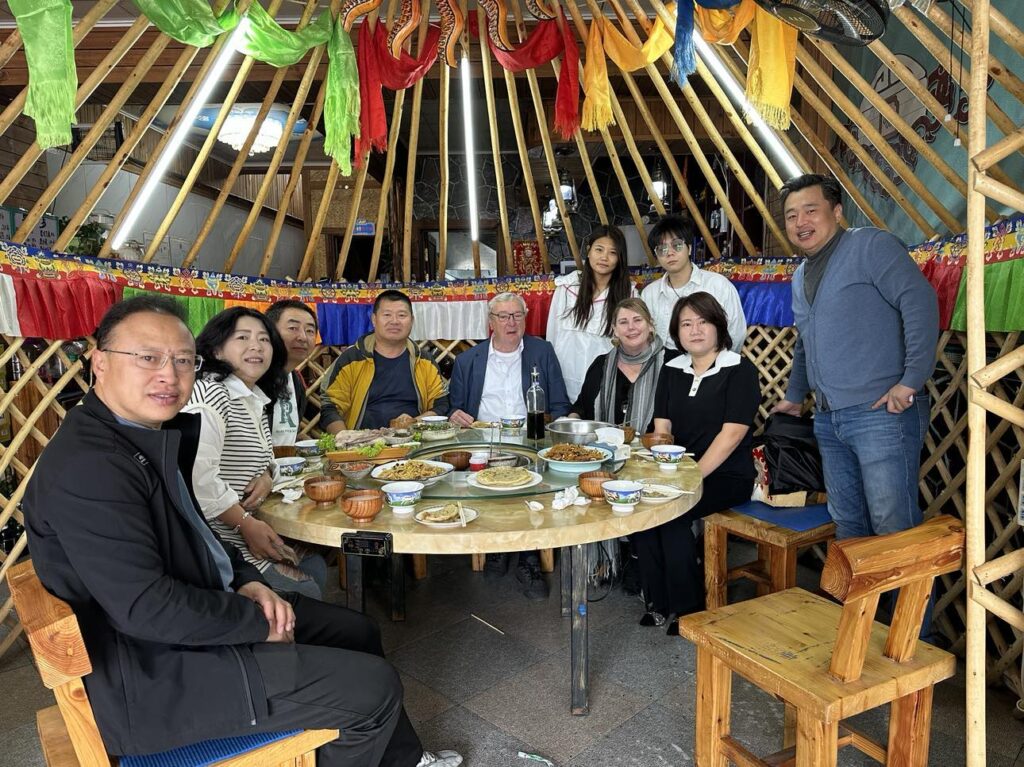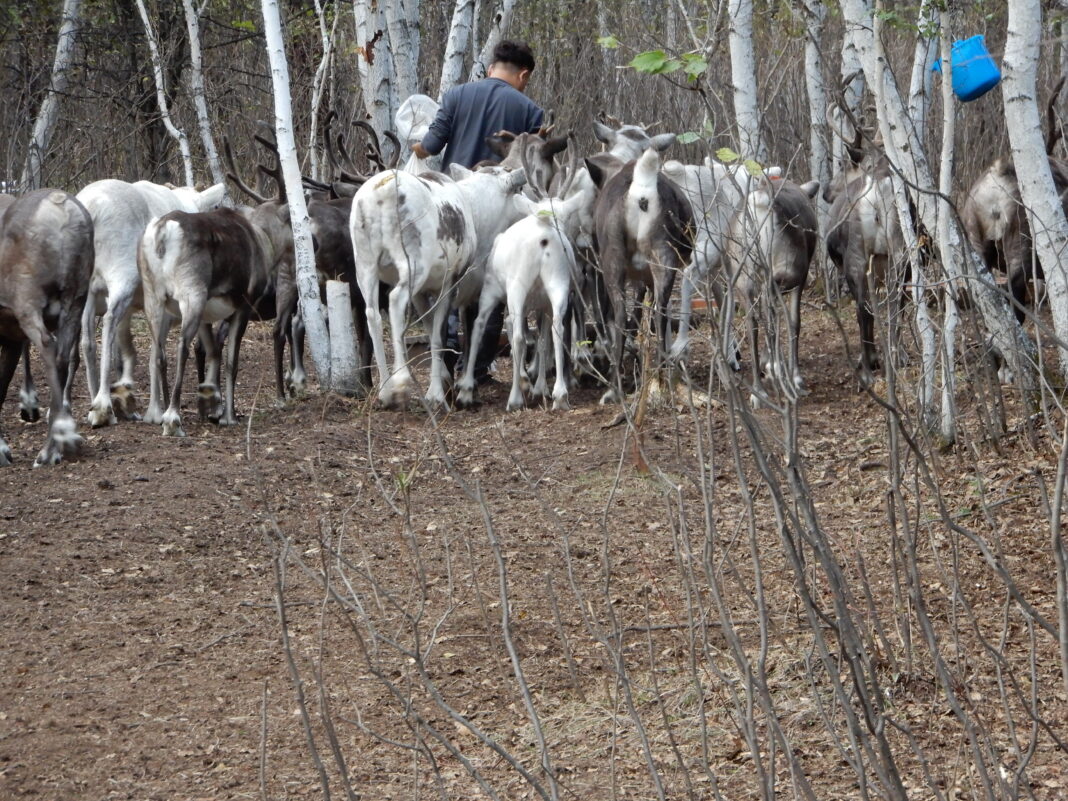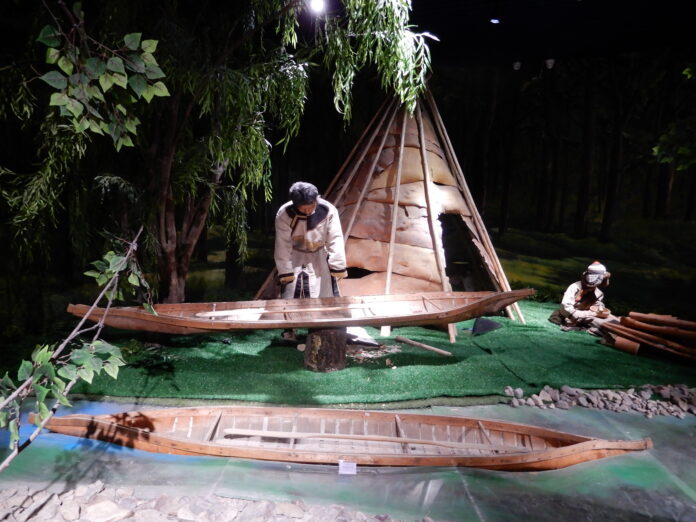By Richard T. Griffiths
The Oroqen Nation represent one of the smallest officially recognised ethic group in China. According to the census in 2010 their population numbered 8,659 people. The largest single concentration (2050 inhabitants) lived in the Oroqen Autonomous Banner area, which is where my colleague Sarah Ward and I visited them, in Alihe (their centre of government) in October 2023.
The Oroqen were a forest people who relied for their food on hunting, fishing, and gathering and they employed animal skins and bark for the birch tree for most of their clothes and protection. They lived in family clans. Their culture was formed and nurtured by the fires around which they met to retell their stories, to recite their poetry, to sing their songs and to celebrate their festivals.
Their culture and beliefs were closely tied to the environment in which they lived, with a deep respect for nature and the creatures it nurtured. Legend held that they were descended from the bears that then ranged through the forests. Their religion assumed a form of shamanism whereby the shaman interceded between the mortals and the gods. Since the 1950s, they have been gradually coaxed out of the forests and into houses and villages.
They abandoned their forest life-styles in favour, initially, of agriculture and later in favour of whatever could earn them a living. In 1996, hunting was prohibited and they were forced to surrender their rifles.
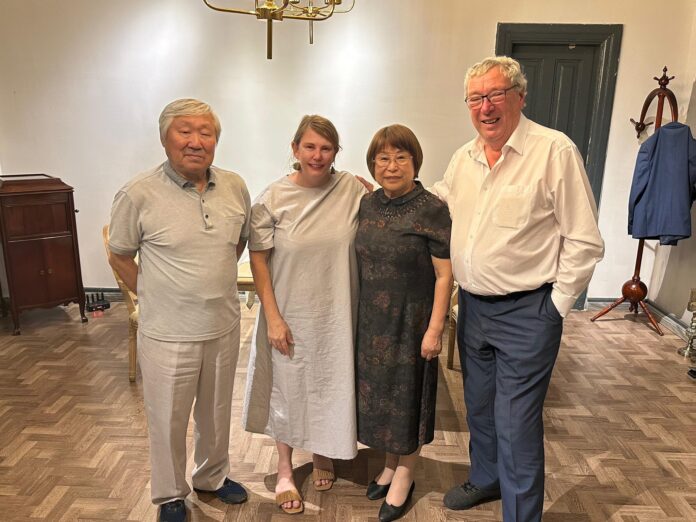
It is difficult to preserve a culture when uprooted from its natural environment, but for the Oroqen the task is complicated by the fact that they had no written language. We met Professor Professors Mau and Han in Harbin on our journey to Inner Mongolia. They were a retired married couple who had helped pioneer recording and documenting their language. They had contributed to the work of producing a phonetic version of the language, compiling a Chinese Oroqen dictionary and preparing school textbooks for teaching the language.
Yet they were sceptical over the chances that the language would survive. Even of children learned the language, there was little incentive to use it. In the Banner Administrative region where the largest concentration was to be found, the Han Chinese constituted 88.3% of the population; the Oroqen only 0.7%. With local employment opportunities limited, the young were forced to look elsewhere for a living. The old, native-speakers, who remained were literally dying out. Only by raising the status of the language, and elevating the pride in the culture, might it survive.
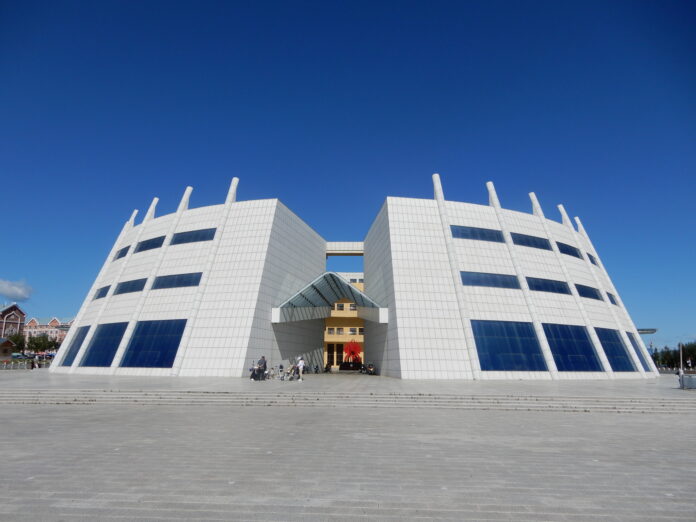
Left in the hands of the people whom we met, the survival of the culture is not in doubt. The centre of their efforts is a beautiful new modern built on the edge of town. It is not stuffed with artefacts for visitors to look at, they are actively encouraged to handle them.
The museum is not limited to the display of traditional cultural objects; part of the exhibition is devoted to the work of living artists. It does not just show hand-made patterns; it has a handicraft room where people can learn how to make them, and have a turn themselves. It is also here that locals are trained so that they can earn money from producing handicraft items for sale.
Near the museum, there is a workshop where items such as clothes, bows and arrows, river canoes and small souvenirs are all made in traditional materials and in traditional ways. They are also all for sale. On the second floor of the museum there is a practice room for dancers, where we were treated to a rehearsal of thirty dancers, all in traditional costume and all enthusiastically dancing to their traditional music.
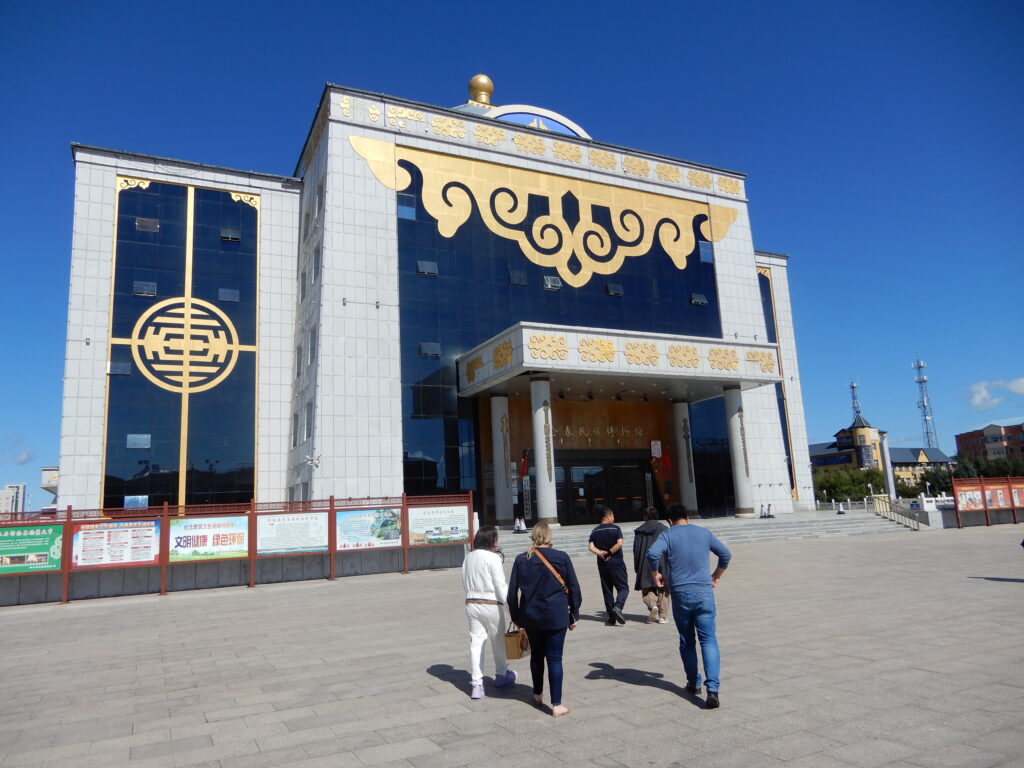
In the middle of town an impressive building is being also being converted into an Oroqen museum. It has more historical objects on display, and more photographs, and larger and more impressive maquettes showing scenes of the traditional way-of-life.
The museum was still being assembled when we visited and, when completed, it will supplement the cultural offering of the town.
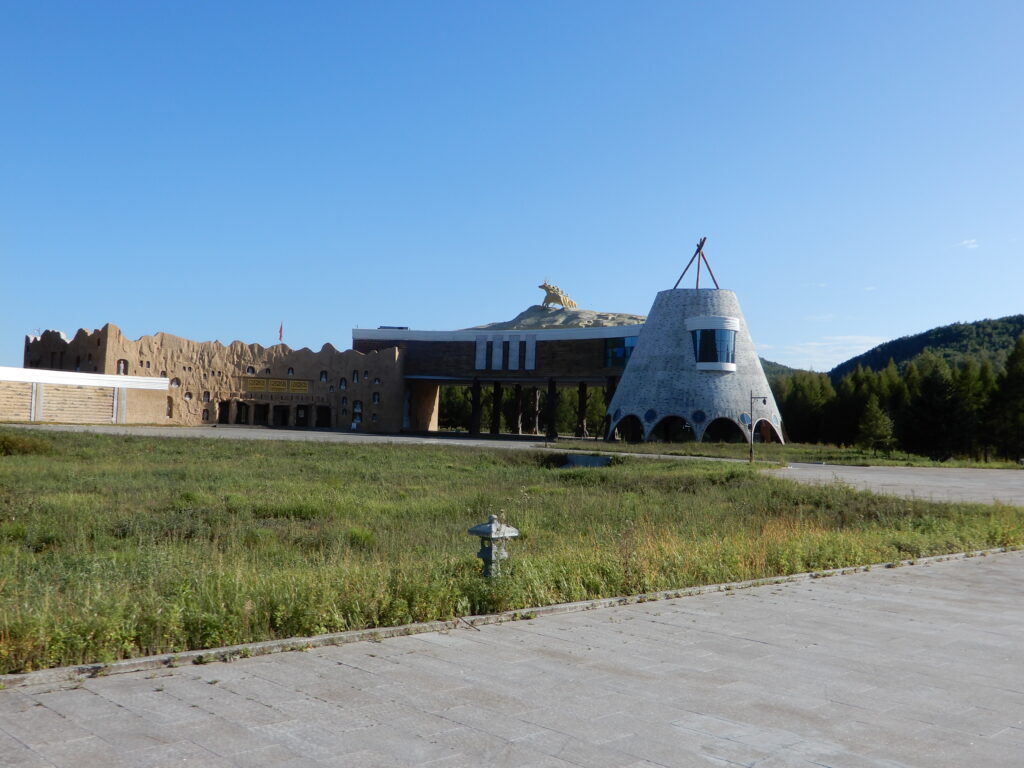
There is a third museum, 10kms out of town, near the Ganxi cave and the forestry reserve. The cave itself was the home of a tribe that inhabited the area some three thousand years before and which, in three separate waves of migration had settled in the plains and established the foundations for the Northern Wei dynasty. The museum is another example of imaginative architecture designed to stimulate the imagination and to make the most of its magnificent setting.
The Governor accompanied us on this visit. She told us how responsible cultural tourism was important to the locality – providing work for hotels, restaurants and service industries, guaranteeing employment for museum guides and other staff, and creating markets for artisanal clothes and souvenirs.
The Covid pandemic had dealt the region a crushing blow, but it had allowed the upgrading of the museums and cultural spaces, and the training for the guides. This needed to be done without creating the crass commercialisation that would destroy what makes the area so attractive. In this way, she felt, the community could be held intact, and could succeed in preserving and regenerating its culture.
